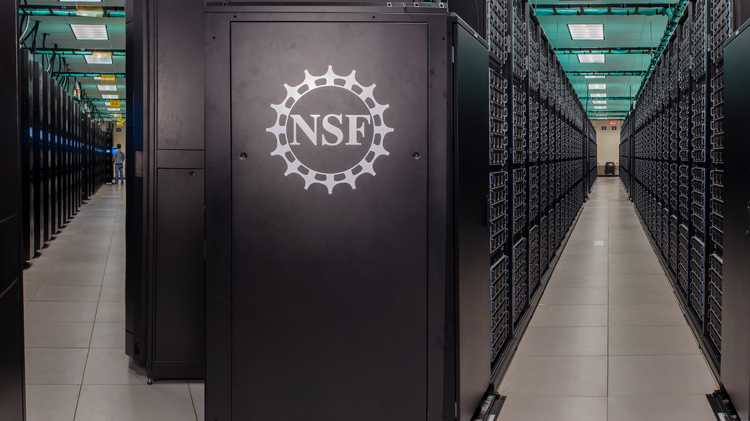SILICON NANOCRYSTALS
The material silicon is of interest across all length scales, especially owing to the pursuit of smaller electronic devices. Some of these devices approach the nanoscale, on the order of one billionth of a meter. In this size regime the properties of nanoscale silicon can change from the bulk regime. Although systems of this size are physically small, they still contain large numbers of atoms.
"Our approach enables us to study larger nanocrystals of silicon and access this size regime for the first time using quantum based methods," said James Chelikowsky of the Oden Institute for Computational Engineering and Sciences (Oden Institute), UT Austin.
His team uses a unique, real-space based method that can scale up more easily on modern computational platforms. They've invented new algorithms using this method that are designed specifically for nanoscale systems.
"These algorithms allow us to rapidly solve complex eigenvalue problems without an emphasis on any individual energy state," Chelikowsky said. "We also avoid computational bottlenecks involved with communication between processors that plague other approaches."
His team's project ran a system with more than 200,000 atoms on 8,192 nodes using methods uniquely designed to work with such large numbers of computational nodes.
"Modern materials science is driven by a unique synergy between computation and experiment," Chelikowsky said. "As computational scientists, we're able to guide and aid experimental scientists thanks to our access to cutting-edge supercomputers."
ELECTRON-PHONON CALCULATIONS
"Our Texascale Days runs were meant to push our flagship software EPW and the PHonon code of the Quantum ESPRESSO materials simulation suite to extreme scaling," said Feliciano Giustino of the Oden Institute.
Giustino is the co-developer of the "Electron-phonon Wannier" (EPW) open-source F90/MPI code which calculates properties related to the electron-phonon interaction using Density-Functional Perturbation Theory and Maximally Localized Wannier Functions.
EPW is a leading software for calculations of finite-temperature materials properties and phonon-mediated quantum processes. The code enables predictive atomic-scale calculations of functional properties such as charge carrier mobilities in semiconducting materials, the critical temperature of superconductors, phonon-mediated indirect optical absorption spectra, and angle-resolved photoelectron spectra.
The code is developed by an international team of researchers and is led by UT Austin via its lead software developer Hyungjun Lee. Lee has performed extensive tests during previous editions of Texascale Days, and has successfully demonstrated near-unity strong scaling of the code in full system runs on Frontera.
The Fall 2022 Texascale Days provided Giustino's team with the opportunity to benchmark the low-I/O mode that they recently implemented into EPW and PHonon codes in the Quantum ESPRESSO suite. One of the main bottlenecks in large-scale calculations is file I/O operations. In particular, file-per-process (FPP), one of the most common parallel I/O strategies, and employed in EPW and Phonon codes, overwhelms the file systems by creating a huge number of files in large-scale calculations.
To address this issue, his team added the low-I/O feature to EPW and Phonon which exploits memory instead of the file system.
Giustino's team used the Frontera supercomputer at half (224,000 cores) and full (448,000 cores) scale to carry out electron-phonon calculations with EPW for the superconductor MgB2, and lattice-dynamics calculations with PHonon for the type-II Weyl semimetal WP2.
"We demonstrated that in both cases the speedup for the full-system run with respect to the half-system run reaches above 75 percent. We believe that with this low-I/O feature we are further pushing the limits of EPW and Phonon in massively parallel calculations," Guistino said.
